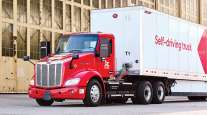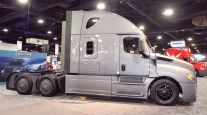Senior Reporter
DTNA Unveils New Driver-Assist Technology in Freightliner Cascadia
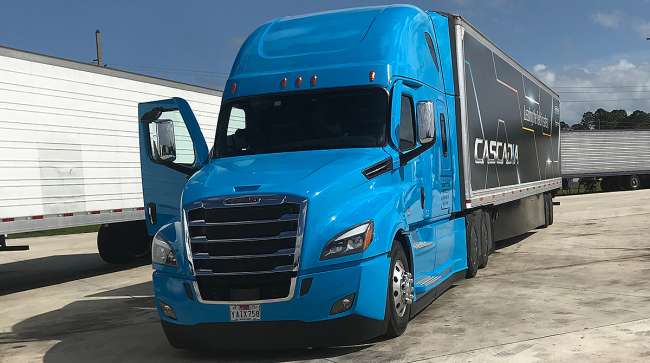
WEST PALM BEACH, Fla. — Truck manufacturer Daimler Trucks North America recently demonstrated automated driver-assist technology that’s set to debut in its 2020 Freightliner Cascadia Class 8 model later this year, and said the system promises to make driving a truck — and the highways overall — safer.
Daimler unveiled a Cascadia with SAE Level 2 autonomous technology during CES in Las Vegas in January, and gave reporters a closer look at the truck during a media event here earlier this month.
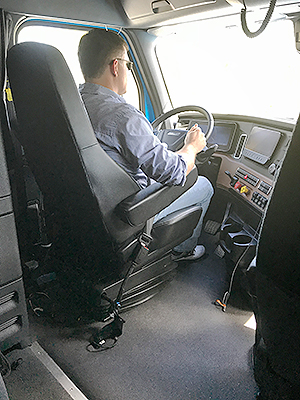
A Freightliner representative removes his hands from the wheel. (Dan Ronan/Transport Topics)
Level 2 means the driver can allow sensors, cameras and computers to accelerate, brake to zero mph and steer the truck automatically for limited periods of time, on well-marked roads. In the Cascadia, the automated system is built around the Detroit Assurance 5.0 package, the latest version of the company’s proprietary collision mitigation system.
This updated package includes a bumper-mounted radar system and high-definition camera affixed atop the windshield. It actively tracks up to 40 objects at a range of about 800 feet, with the radar prioritizing six objects and leaving the camera to monitor four other priority objects. The computer running the program can refresh at about 200 times per second.
To protect against blind spots, the truck also has Side Guard Assist, which consists of two radar sensors that monitor the right side of the trailer to the end of the unit.
For the driver, the package includes active brake assist, adaptive cruise control to a complete stop, lane-departure protection, automatic wipers/headlamps, intelligent high-beam headlights and a traffic sign display system in which the cameras recognize speed limit and other traffic signs and display the information on the dash panel. However, the driver must monitor the conditions and be prepared to intervene if the automated system fails to respond properly.
It also acts to keep drivers attentive. During a 2½-hour test drive for journalists on city streets and a busy stretch of Interstate 95 from West Palm Beach to Fort Pierce and back to West Palm Beach., a driver removed his hands from the steering wheel for 15 seconds. At this point, the system issued an audible and visual warning for the driver to return his hands to the wheel. If the driver still doesn’t do so, the steering functionality will shut down, though the lane-keeping assist function will remain in effect to prevent the truck from deviating from its lane.
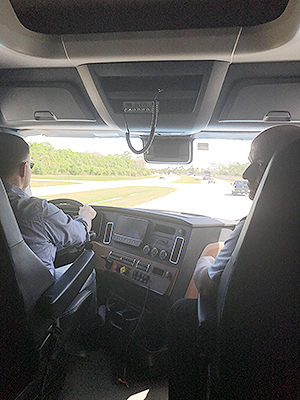
A forward-facing camera works with the onboard radar. (Dan Ronan/Transport Topics)
On one occasion, with the driver’s foot off the brake pedal, the adaptive cruise control slowed the truck from 45 mph to a stop at a red light, keeping a safe distance from the passenger car in front.
Once stopped, the driver touched the brake pedal. When the light turned green, he accelerated and merged onto the interstate.
“For us — and me, personally —it’s all related to making it safer for the driver and safer for everybody else on the road,” said Mike Stricker, DTNA director of technical sales. “Technically, we combine or fuse our radar, which is our primary sensor for detecting objects around the vehicle — at least forward of the vehicle. We combine that with our camera technology that in turn allows us to see what’s in front of us.”
Stricker spoke on Transport Topics Radio, and the full interview will air Feb. 23 at 2:30 p.m. EST on SiriusXM Channel 146.
Daimler maintains that the technology in the new Cascadia will reduce a driver’s fatigue level and provide an additional level of support while not taking away the driver’s role of being in command.
“The system always assumes the driver has a good reason for doing [something],” said Brian Daniels, manager for Detroit powertrain and component product marketing. “The final decision always lies with the driver.”


